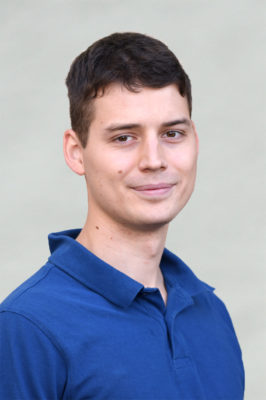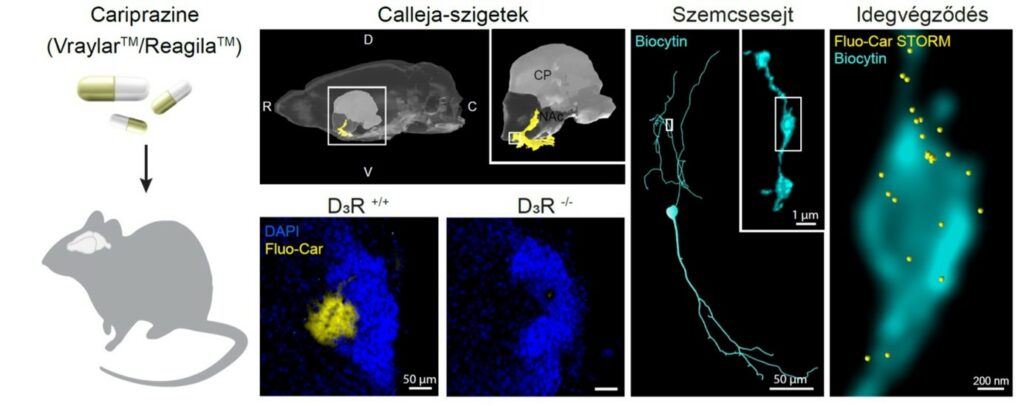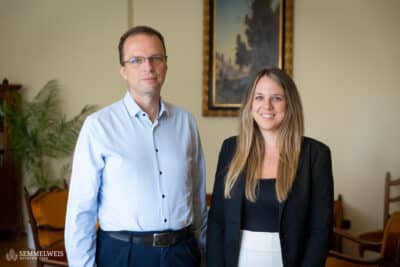
The first author of the study published in the prestigious journal Nature Communications is dr. Susanne Prokop, a doctoral student at Semmelweis University. The publication demonstrates a super-resolution microscopic method in which the binding of drugs to the cell surface can be measured with nanometer accuracy using fluorescent molecules. The new method was named PharmacoSTORM, based on the STORM (stochastic optical reconstruction microscopy) super-resolution microscopy procedure. This enables scientists to understand the drugs’ mechanism of action more precisely. The new method also helps to understand which of the more than a hundred types of neurons play a role in the development of the effects or side effects of a drug in a nervous system disease. To prove this, Dr. Susanne Prokop and Dr. Márton Vámosi examined the binding pattern of cariprazine in the brain.

Developed by the pharmaceutical company Gedeon Richter, cariprazine is the latest success story in the treatment of psychiatric illnesses, mainly schizophrenia and depression, with annual sales exceeding 1 billion dollars. In their experiments, they discovered that cariprazine binds mostly to the granular cells in a brain area called the islands of Calleja.
“Currently, almost nothing is known about these cells, and the research results of the these Semmelweis students are remarkable because they shed light on the psychiatric significance of a new cell type”, Dr. István Katona, Head of the Molecular Neurobiology Research Group of Institute of Experimental Medicine pointed out.

The study published in Nature Communications is was prepared in collaboration with the “Lendület” Molecular Neurobiology Research Group of the Institute of Experimental Medicine (leader: Dr. István Katona) and the Medicinal Chemistry Research Group at the Research Center for Natural Sciences of Eötvös Loránd Research Network (leader: Dr. György Keserű). Researchers from the Institute of Physiology at Semmelweis University, the University of Leiden and the University of Catania also took part in the collaboration. The educational background of this scientific work was provided by a joint doctoral training of the Doctoral School of Semmelweis University and the Institute of Experimental Medicine.
“As a result of this long lasting and fruitful relationship, young researchers acquire such theoretical and methodological knowledge that they can publish their first scientific results in the world’s most prestigious newspapers. This springboard has an impact on their entire careers,” Dr. István Katona emphasized.
In the “Lendület” Molecular Neurobiology Research Group, Dr. Susanne Prokop is the eighth young professional to present her doctoral work’s results in a scientific journal ranked in the Nature Index.
 The research was supported by the NKFIH tender “Élvonal”, the National Brain Research Program and the EFOP-3.6.3-VEKOP-16-2017-00009 program of Semmelweis University.
The research was supported by the NKFIH tender “Élvonal”, the National Brain Research Program and the EFOP-3.6.3-VEKOP-16-2017-00009 program of Semmelweis University.
S. Prokop, P. Ábrányi-Balogh, B. Barti, M. Vámosi, M. Zöldi, L. Barna, G.M. Urbán, D.A. Tóth, B. Dudok, A. Egyed, Deng H., G.M. Leggio, L. Hunyady, M. van der Stelt, G.M. Keserű and I. Katona (2021). PharmacoSTORM nanoscale pharmacology reveals cariprazine binding on Islands of Calleja granule cells. Nature Communications 12, 6505.
Dr. István Katona, Ádám Szabó
Translation: Viktória Kiss
Photo: Balázs Pintér, Benjámin Barti (illustration)


